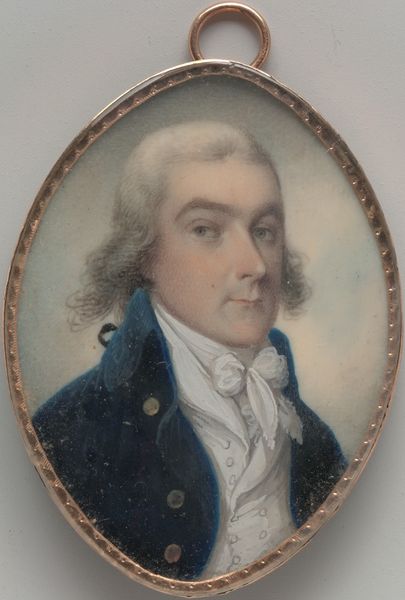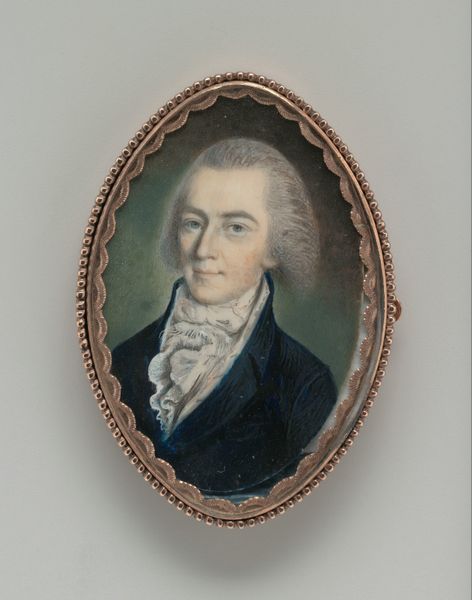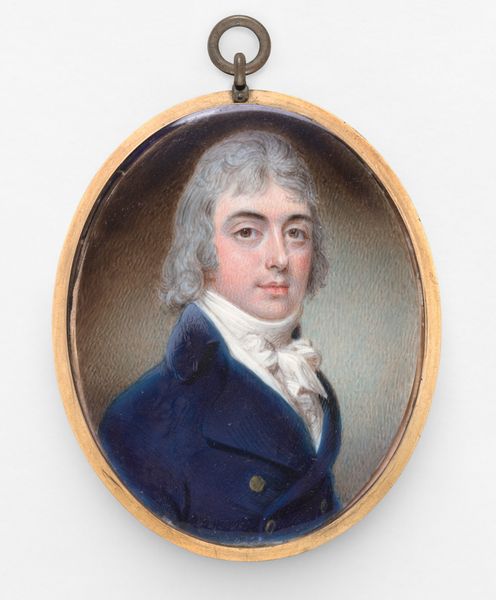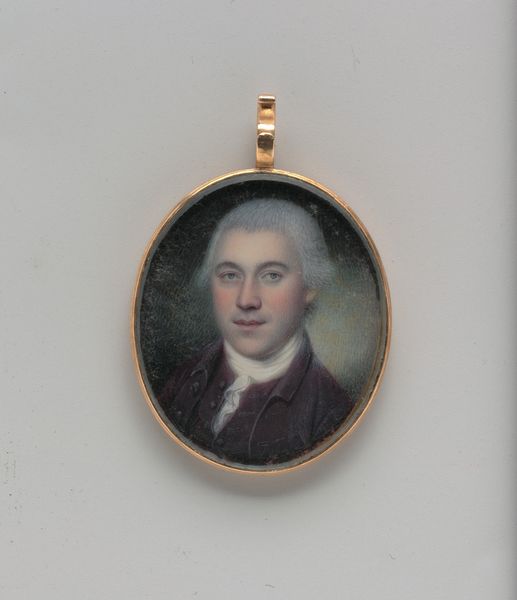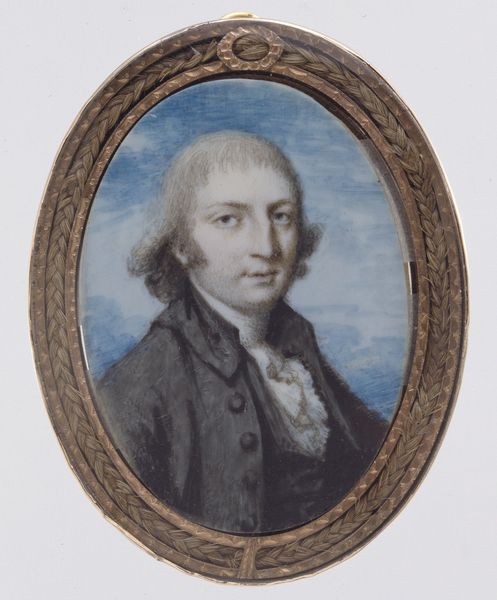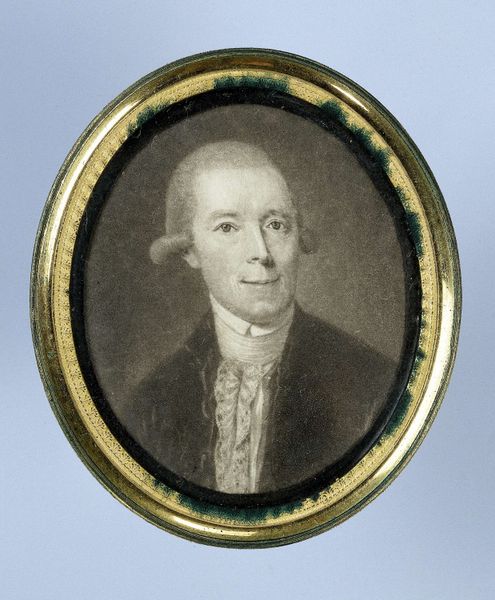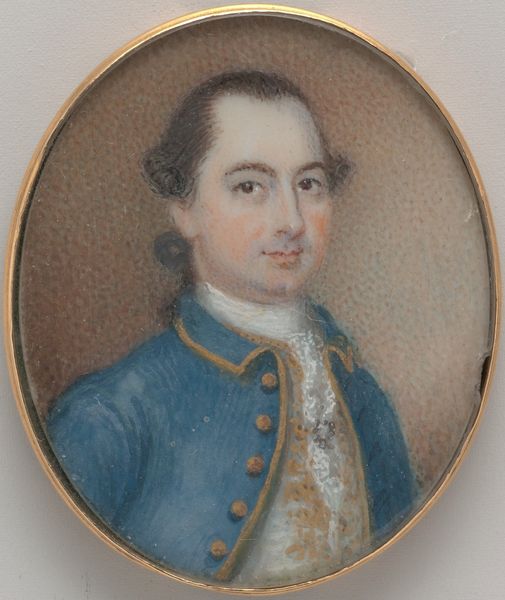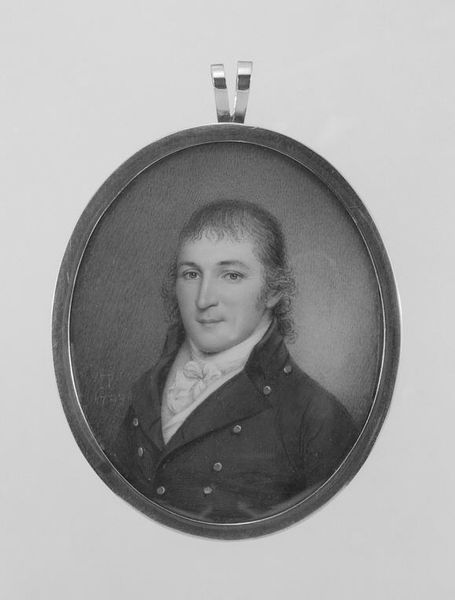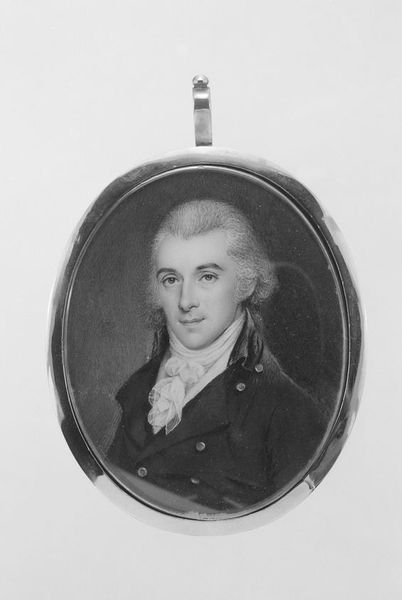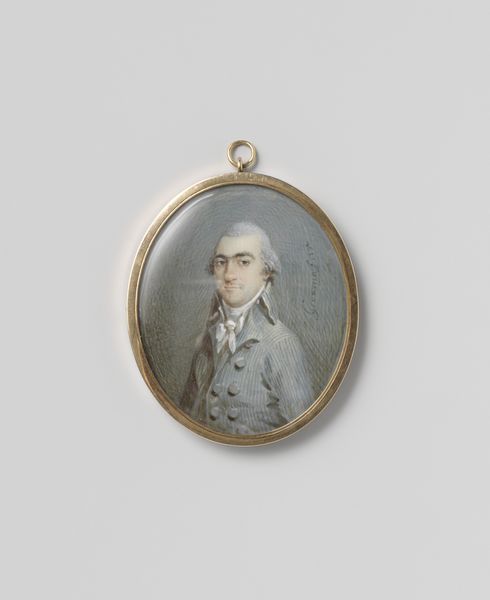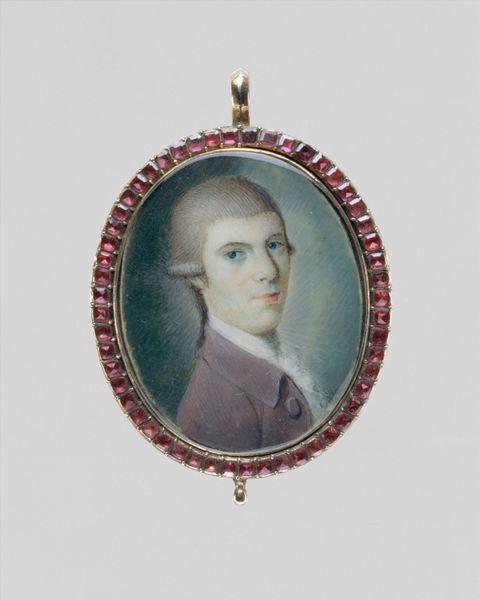
painting, watercolor
#
portrait
#
neoclacissism
#
painting
#
watercolor
#
romanticism
#
miniature
#
watercolor
Dimensions: Oval: 2 7/8 in. H x 2 5/16 in. W (7.3 cm x 5.86 cm)
Copyright: Public Domain
Curator: What a darling fellow! He’s like a little bonbon of a man, isn’t he? Editor: This is Philippe Abraham Peticolas's "Portrait of a Gentleman," a miniature watercolor from 1798, currently held at the Metropolitan Museum of Art. Right away, it evokes a specific moment, one of immense social and political change. Curator: A moment he’s entirely oblivious to, it seems! Look at that coy smile, that powdered wig. It’s the epitome of late 18th-century swagger, all tied up with a satin ribbon. Is it swagger or anxiety I'm reading in his expression? Editor: There is an intentionality here, a way of conveying power and status. Note the way his coat's pastel hue contrasts against the darker backdrop and the subtle glimmers of what appear to be draperies, all strategically employed to establish dominance. These miniatures, so intimate and portable, often served as symbols of familial or political allegiance, connecting individuals across vast distances. Curator: That blue... It’s like a diluted dream. I’m getting such a distinct sense of vanity—though perhaps I'm being harsh? He’s very much of his time. Tell me, is it a celebration or a satire of its subject? Is it subversive, somehow? Editor: Satire's possible, given that Peticolas worked in a time marked by revolutionary fervor. To present a gentleman in such opulent attire, almost defying the rise of republican values, could indeed be interpreted as a subtle act of defiance—or maybe, conformity. Curator: Conformity draped in just enough rebellious flair to make it interesting. Perhaps that's the true swagger—a silent wink to the dying embers of an era. Though what exactly is communicated through art? That can never really be confirmed, I suppose. Editor: Ultimately, it reflects the tension between aristocratic traditions and emerging social orders. These intimate portraits, while seemingly benign, invite deeper questions about the portrayal of identity during transformative historical periods. What do we choose to remember, and what is deliberately obscured? Curator: Well, I know what I'll remember—a man, encased in watery blue, clinging to the edges of time with a secret smile. I suspect that future viewers will draw comfort from it and a reminder to embrace who you are no matter the circumstances. Editor: I am intrigued to learn about how social roles impacted personal identities. Perhaps some things never change. Thank you.
Comments
No comments
Be the first to comment and join the conversation on the ultimate creative platform.
